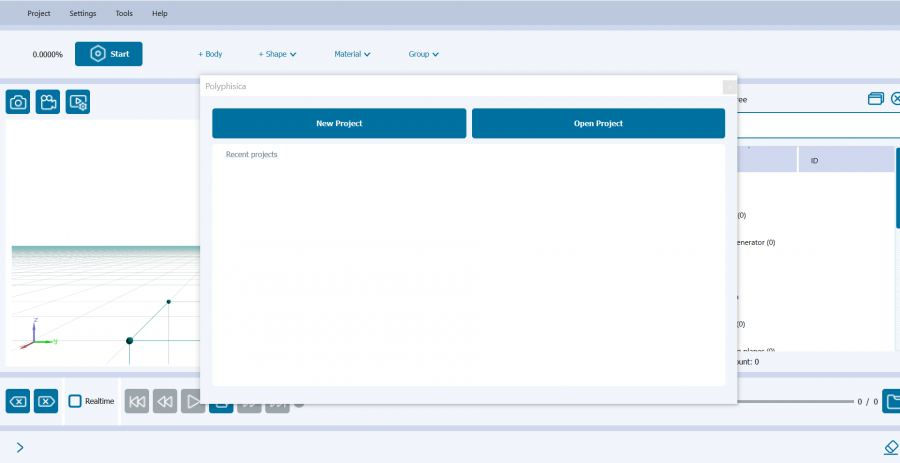
Polyphysica
Polyphysica is a three-dimensional physical modeling system that utilizes the discrete element method (DEM) to simulate large ensembles of particles and their interactions with each other and with natural and engineered objects to predict their performance.
Mac OS
Linux
Windows




Polyphysica supports spherical and convex dilated polyhedral particles, and compound particle shapes (shapes created by fusing several particles together to create complex convex and concave shapes). These particles are represented in Polyphysica by bodies, which are assigned shapes, materials, and many other properties. The Polyphysica GUI (GUI) provides an uncluttered screen that consists of a viewer panel, Objects Tree, and Project Editor widgets. Objects Tree and Project Editor widget's menu items are used together to define the objects and set object parameters needed to build a scenario that is displayed in the viewer panel.

Powerful, robust, and convenient tool for solving difficult engineering and physical challenges.
The following is a non-comprehensive list of Polyphysica's features to acquaint the user with the capabilities of this software:
-
The Polyphysica integrated modeling environment and graphical user interface
-
A parallel kernel that uses efficient algorithms for fast DEM computations on laptop, desktop, and high-performance computing systems using Linux, Microsoft, or Apple operating systems.
-
The Lua scripting language capability to create additional functions to control objects, initialize objects, monitor their behavior and some other actions
-
Import of CAD STL and PLY files describing particle shapes and engineered objects
-
Realistic grain shapes using polyhedral particles with computational efficiency almost independent on the grain complexity.
-
Accurate mechanical, material, and physical particle properties
-
Friction, adhesion/cohesion, elastic, and viscoelastic particle contact physics, gravity and local drag forces
-
Item simulation of more than a million particles per scenario
-
Efficient computation of scenarios using a distribution of particle sizes
-
Static and dynamic particle generation
